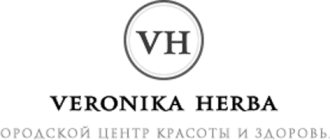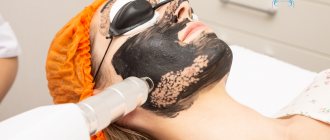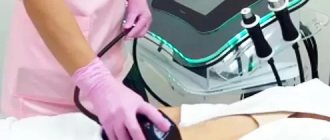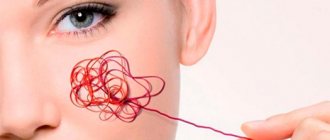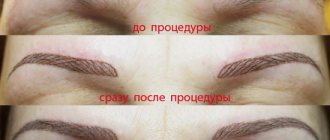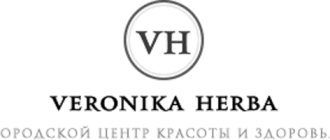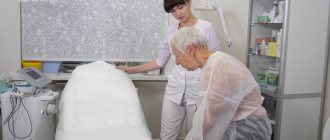Indications for autohemotherapy
Scheme of autohemotherapy
How often can the procedure be done?
What does autohemotherapy treat?
Results of autohemotherapy
Autohemotherapy is a medical procedure during which a person’s own blood is administered in order to activate the immune system. This method is based on the assumption of scientists about the “memory” of blood, which, when administered repeatedly, can find the source of pathology and suppress its development.
Autohemotherapy in Moscow is carried out by appointment at an appointment with a dermatovenerologist. You can choose the Diamed clinic closest to you and make an appointment with our specialist Ernazarov B.Sh. by calling the phone number. Or fill out the online registration form on the website, our administrators will contact you to agree on the date and time of the appointment. Branch phone numbers:
- on Shchelkovskaya 8 (495) 221-21-14 VAO
- In Mitino 8 (495) 212-90-47 SZAO
Our clinics are located within walking distance from metro stations. We work seven days a week. We accept cash and bank cards for payment.
What is the autohemotherapy procedure?
This therapeutic method involves injecting the patient's own untreated venous blood. Most often it is performed intramuscularly, and sometimes subcutaneously. This biological fluid is not subjected to any actions and is not mixed with other medicinal substances.
The procedure enhances hematopoiesis and increases the body's resistance to various diseases. There is an opinion that blood, while circulating through the vessels, can “remember” the processes that occur in the body.
When they enter human tissue a second time, blood cells themselves are able to identify sources of inflammation, eliminate them, and also fight pathogenic microorganisms. When administered, it perfectly stimulates tissue immunity. The action of autohemotherapy is aimed at activating the following processes:
functioning of the immune system; hematopoietic processes; functioning of the hemostatic system.
After using the method, chills, joint damage, temperature reactions and other negative phenomena do not occur. The procedure can be used not only in a hospital setting, but also in an outpatient setting. The technique does not replace other methods of treatment. Autohemotherapy is used only in complex treatment of diseases.
Types of autohemotherapy
Fresh, unpurified blood is most often injected into the muscles, but this is not always the case. In some cases, various drugs are added to the plasma and injected into reflexogenic points or back into the vein. Types of autohemotherapy:
- Introduction of autologous blood. The molecular composition of plasma can be changed by exposure to X-ray waves, ultrasound, or freezing.
- Biopuncture. Blood mixed with oxygen, which enters it as a result of shaking, is injected into reflexogenic points. Sometimes homeopathic medicines are added to the composition.
- Ozone cleaning. To enhance the immunomodulatory, anti-inflammatory and antiviral effect, plasma is ozonated. This composition is injected into a vein, and not into the muscles.
- Stepwise technique. If the problem is infectious, antibiotics are added to the plasma.
Indications for treatment with autohemotherapy
The introduction of untreated venous blood strengthens the immune system and suppresses inflammation. The procedure is indicated for the following pathologies:
dermatological diseases: eczema, acne, furunculosis, pustular skin lesions; prolonged pneumonia; Chronical bronchitis; frequent colds; digestive tract disorders; immunodeficiencies; exacerbation of viral infections (papillomavirus, cytomegalovirus, herpes virus); infectious lesions of the urinary organs; trophic non-healing ulcers; damage to joints by pathogenic microorganisms; frequent nosebleeds; complicated course of menopause; gynecological diseases; adhesions in the pelvic cavity; infertility; bronchial asthma, allergic origin.
Autohemotherapy is used to accelerate metabolic processes in the body. The procedure slows down the aging process. It is also used to provoke indolent infections.
Effective or dangerous: what evidence-based medicine says
Yes, today, in the era of development of the pharmaceutical business, it is unprofitable to prove the benefits of a virtually free “medicine”, because blood for transfusion does not even need to be processed. Therefore, there are enough opinions from opponents of the method, proving not only the ineffectiveness, but also the danger of therapy.
To believe it or not is a matter for the patient and his attending physician. However, the collected evidence base, including the results of studies by European scientists, shows that in some cases autohemotherapy cures faster and better than medications, and also does not cause mutations in the body.
Interesting fact! If some opponents consider the transfusion of unchanged blood dangerous, then outdated but still used “banks” and acupuncture, which is popular today, are treated with less mistrust. And the methods are very similar. In all cases, an artificial bruise is formed using physical pressure. It is a hematoma in a certain place that activates the necessary resources (program) of the body, setting it up for independent healing.
Contraindications
Blood should not be injected into tissues in large volumes. This leads to a pronounced local inflammatory reaction and the formation of abscesses. The use of this technique is prohibited for the following pathologies:
malignant tumors; active phase of tuberculosis; viral hepatitis; liver damage of various origins; decompensated diseases of the kidneys and cardiovascular system; mental disorders in the acute phase; heart attack in the acute stage; pregnancy; breastfeeding period;
The procedure is not performed on persons under the age of eighteen.
Side effects
After administering venous blood for acne, lumps may appear. This is due to the structure of the biological material. Poor absorption of blood in the muscle is due to its density. This is manifested by pain and the appearance of a characteristic lump at the injection site. It should be taken into account that the pain may gradually increase.
Often, seals appear when 4 ml of venous blood is injected. To avoid this unpleasant manifestation, you should make compresses and use an iodine mesh.
In rare cases, among the side discharge that appears, chills, weakness and a slight rise in temperature are observed. The likelihood of unwanted effects is influenced by the general condition of the body and well-being.
- Why is it necessary to transfuse blood from a vein into the buttock?
Features and scheme of autohemotherapy
In autohemotherapy, blood is first taken from a vein. It is then injected into human tissue. When large volumes of blood are administered at once, inflammatory reactions develop. They are manifested by increased body temperature, chills and muscle pain.
Therefore, the introduction of untreated blood should be carried out according to a special scheme so that adverse reactions do not occur. During the first procedure, no more than one milliliter of the patient’s own blood is injected under the skin. Gradually its volume is increased, bringing it to ten milliliters. Then they gradually begin to reduce this amount.
Further treatment is carried out as follows:
- No more than two milliliters of blood is injected into the gluteal muscle. They are taken from the patient’s vein directly during the procedure. The injection is carried out in the upper outer quadrant of the gluteal region.
- Repeat the procedure two days later. In this case, the blood volume is increased to four milliliters.
- The third injection is given two days later. The volume of injected blood reaches six milliliters.
- Then the procedure is also performed at intervals of one or two days. At the fourth injection, 8 ml is injected, the fifth - 10 ml, the sixth - 10 ml of fresh blood.
- During the seventh injection, 8 ml of blood is injected. Then therapy is continued according to a reducing regimen.
When performing the procedure, observe sterile conditions. The course of treatment is up to fifteen procedures. Ingoda autohemotherapy is combined with ozonation of venous blood and its exposure to x-rays. It is often carried out in conjunction with hirudotherapy.
How does the procedure work?
Previously, cosmetologists did subcutaneous injections. This made it possible to achieve the desired result, but there was a side effect in the form of hematomas. Injections began to be given intramuscularly. After them, no traces remain on the face, and the effect remains.
The procedure goes like this: blood is taken from a vein from the patient and injected into the muscles, usually the buttocks, on the opposite side. So, if blood was taken from the right arm, then an intramuscular injection is made to the left side. The course starts with 2 ml. and continue increasing with a factor of 2. The procedure is carried out every other day for 10 days, sometimes more.
Benefits and results of this procedure
Autohemotherapy is combined comprehensively with other treatment methods. This makes it possible to enhance their effect and quickly receive a positive therapeutic response from the body. The procedure is considered a gentle technique. The risk of side effects if the treatment regimen and conditions are followed is minimal. The risk of developing allergic reactions is practically reduced to zero.
The advantages of the technique include:
no special training required; it is carried out on an outpatient basis; the procedure is practically painless.
The method is used to correct a wide range of problems. It is easy to combine with other treatment methods.
Dietary supplements inexpensively
The saying that the new is the well-forgotten old is relevant in relation to such a method of treatment as autohemotherapy for herpes. For a long time it was believed that this disease was completely harmless and manifested itself during colds.
Free consultation right now!
Online consultation with a specialist on your issue!
License number: LO-77-01-019036
However, in-depth studies of the herpes virus have shown its wider distribution and significant impact on the activities of the entire body. Lying low, it bides its time, and as soon as a person becomes ill, herpes is ready to begin destroying his immune system. Its appearance is also facilitated by:
- avitaminosis;
- weakening of the body after a major operation;
- chronic fatigue syndrome;
- stress-depressive conditions;
- carrying out radiotherapy.
Localization of rashes
As a rule, the skin that is located on the extensor surfaces (elbows, knees) of large joints changes. The favorite localization is the border of the scalp and places that are constantly exposed to injury or friction. However, this sign cannot be considered a diagnostic criterion, since in atypical forms of lichen planus, other surfaces of the skin are also affected.
Characteristics of plaques
The size of the rashes may vary. The primary elements are considered to be small papules of bright red or burgundy color. Over time, their size increases significantly, and they also tend to merge. In 90% of cases, signs of psoriasis include the formation of standard plaques, which are characterized by the triad:
1. A stearin stain is characterized by lightly scraping off gray-white scales that resemble candle shavings in appearance.
2. If you continue to scrape the surface of the plaque, then after removing all the scales, a thin white film will appear, called terminal.
3. The symptom of blood dew can be detected by removing the terminal film. If the skin papillae are damaged, there will be not heavy bleeding, but drip bleeding.
Preparations and remedies for psoriasis
For this disease, the most popular means are for external use. They may contain several components that prevent excessive division of skin cells, as well as soften and reduce skin itching. The names of the drugs vary, but most often they contain the following substances:
- Glucocorticosteroid hormones that reduce inflammation and inhibit the reactivity of the immune system. When applied topically, hormones have a less pronounced systemic effect. They are part of Elokom, Advantana.
- Vitamin D is included in a large number of topical preparations. Its greatest effectiveness for the treatment of psoriasis is shown when combined with ultraviolet irradiation.
- Tar is used mainly for the treatment of lesions located in the scalp area.
- Activated zinc quickly eliminates redness and skin itching. This component is practically harmless to the body. Among the drugs for the systemic treatment of psoriasis are:
- corticosteroids, as they regulate metabolism and eliminate foci of inflammation, but they have a pronounced withdrawal syndrome;
- cytostatics inhibit the division of epidermal cells, but at the same time weaken the immune system and slow down the regeneration of other tissues;
- immunomodulators help normalize immune reactions, but their effectiveness has not been fully studied;
- Non-steroidal anti-inflammatory drugs reduce only the severity of itching and inflammation, but do not affect the primary changes. Vitamins and antiallergic drugs are used in addition to the main therapy. Since there is no truly effective medicine to combat psoriasis, it is prescribed in conjunction with physiotherapeutic procedures.
Quality of life of patients with psoriasis
Along with other chronic diseases, psoriasis can significantly worsen the quality of life of patients, who may experience both physical and psychological discomfort. Difficulties with labor and social adaptation often arise. Thus, severe itching sometimes interferes with normal rest, and plaques on the hands can limit performance. Scaly rashes on the scalp are especially difficult to tolerate. This is due to the fact that these plaques cause rejection in some, as a result of which patients become unsociable, and social phobia may even arise. Stress due to dissatisfaction with one's own appearance, constant pain or itching, as well as immune disorders quite often lead to the development of mental disorders (increased anxiety, depression, social isolation). Only a quarter of patients with psoriasis do not experience psychological discomfort; for the remaining patients, this disease is a serious obstacle to normal life. Among the symptoms of psoriasis that worsen the quality of life, the first place is occupied by itching of the skin, in second place is joint pain due to psoriatic arthritis.
